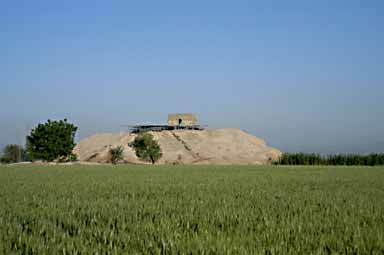 |
On the beautiful spring morning, May 14,
2003, I was happy to see the hectic traffic of Tehran behind me on
the road toward Varamin. Gradually the view of city buildings was
replaced with pleasant view of barley farms. The small direction
sign "Ray Fire Temple" showed my destination..
Could this place be the heart of ancient
"Ragha?" outside modern city of Ray, Ragha is mentioned in Avesta
and several ancient Persian texts for its importance.
This historic site is called Mill Tappeh,
Tappeh meaning mound in Farsi. |
|
Arial view of Mill Tappeh, the site of
Ray Fire Temple, near Tehran, Iran |
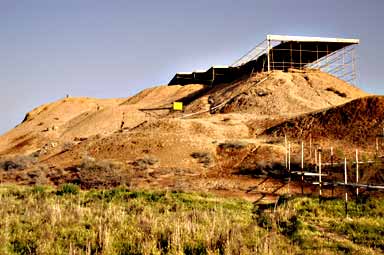 |
Scaffolding and roofs indicate recent
excavation work on this site, but archeologists are nowhere to be
seen. The guard on duty explained that due to budget cuts work
stopped two years ago.
A small building housed artifacts and
other findings from this site. I could get permission to visit the
site and storage rooms in the building.
|
|
Archeological site of Mill Tappeh, the site of Ray
Fire Temple |
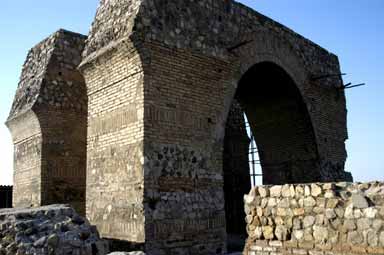 |
On top of the mound remnants of a large
Taq is still standing. In ancient times it housed the altar
containing the immortal fire.
The Taq could be easily seen from a
distance serving the main purpose of major fire temple.
|
|
Remnants of a large Taq holding the ever
burning fire altar. |
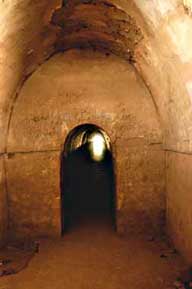 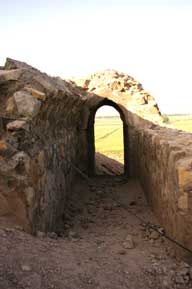 |
Remains of a multi-storey temple are
still standing on the mound. A long and narrow corridor takes the
visitor from one side to the opposite side of the temple. I can not
guess what purpose this tunnel served in ancient times.
Fallen columns and fragments of building
ornament stucco pieces cover the excavation site.
One does not need to be an expert to see
the immense importance of this temple, perhaps to the entire Ragha
region. |
|
Corridors
,
fallen columns, and stucco ornaments are |
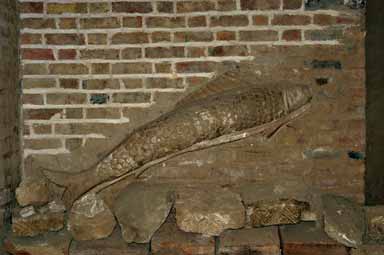 |
Inside the site storage room, now
serving as small museum one can see artifacts excavated from this
site.
The first and the most striking item is
a full size fish made of stucco; it seems to be a building ornament.
Perhaps the great reverence for water in
Zarathushti religion has given the fish an important place in
decorating the temple. |
|
A fish made of stucco as building
ornament is excavated. |
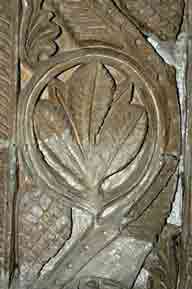 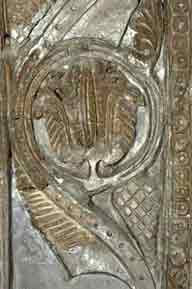 |
Large pieces of building ornament show
decoration with leaves and other plant material on temple building.
|
|
Building ornaments in leaves and other
plant forms |
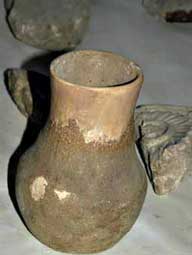 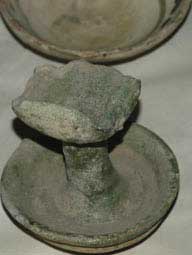 |
Items found in excavation are usual
ceramic pot and oil lamp. |
|
Artefacts found in excavation -- ceramic
container, oil lamp |
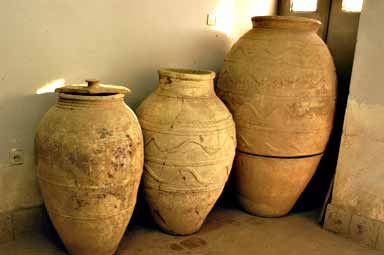 |
Outside the storage rooms three large
ceramic containers are standing in the hallway. Barley and wheat
remnants were found in two containers, and the third one was found
full of Sassanian silver coins -- perhaps donations made by its
ancient visitors.
Well, before leaving the site, I
prayed at the temple's altar that one day excavations continue to
help this magnificent temple reveal more about itself and its
importance. |
|
Large ceramic containers
were excavated. |